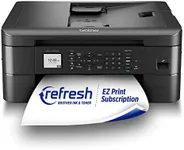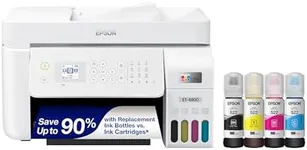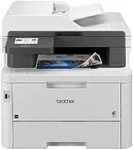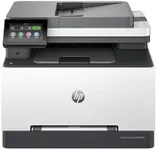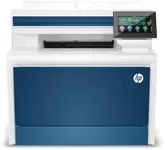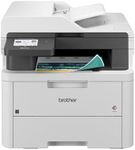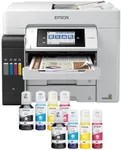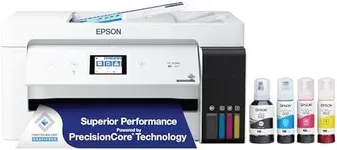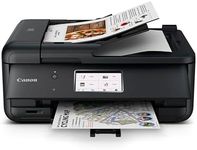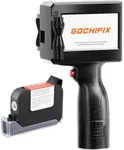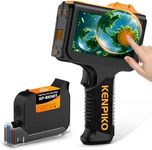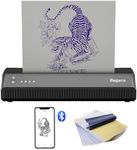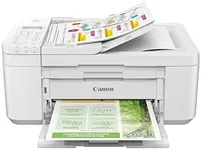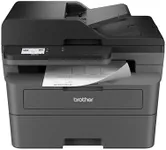Buying Guide for the Best Printer Fax Combo
When choosing a printer-fax combo, it's important to consider your specific needs and how you plan to use the device. This type of machine combines the functionality of a printer and a fax machine, which can save space and streamline your workflow. To make the best choice, you should evaluate several key specifications that will impact the performance and suitability of the device for your tasks. Understanding these specs will help you find a model that fits your requirements perfectly.Print TechnologyPrint technology refers to the method a printer uses to produce text and images on paper. The most common types are inkjet and laser. Inkjet printers are generally better for high-quality color prints and photos, while laser printers are faster and more cost-effective for high-volume black-and-white printing. If you need vibrant color prints, go for an inkjet. If you need to print a lot of documents quickly and efficiently, a laser printer might be the better choice.
Print SpeedPrint speed is measured in pages per minute (PPM) and indicates how quickly a printer can produce documents. This is important if you need to print large volumes of documents regularly. For light home use, a lower PPM (around 10-20) might be sufficient. For office use where speed is crucial, look for a printer with a higher PPM (20+). Consider your typical print volume and how often you need to print quickly to determine the right speed for you.
Print ResolutionPrint resolution, measured in dots per inch (DPI), determines the clarity and detail of the printed output. Higher DPI values mean better print quality. For general document printing, 600 DPI is usually adequate. For high-quality photo printing or detailed graphics, look for a printer with 1200 DPI or higher. Think about the type of documents you will be printing most often to decide the necessary resolution.
Fax FeaturesFax features include the ability to send and receive faxes, fax memory, and speed. Some models offer additional features like auto redial, speed dial, and group dialing. If you frequently send faxes, look for a model with a high fax memory and fast transmission speeds. If faxing is only an occasional need, basic fax capabilities might be sufficient. Consider how often and how extensively you will use the fax function.
Connectivity OptionsConnectivity options determine how you can connect the printer-fax combo to your devices. Common options include USB, Wi-Fi, Ethernet, and Bluetooth. Wi-Fi and Ethernet are ideal for networked environments, allowing multiple users to connect. USB is straightforward for direct connections to a single computer. Bluetooth is useful for printing from mobile devices. Think about your setup and how you prefer to connect your devices to choose the right connectivity options.
Paper HandlingPaper handling refers to the types and sizes of paper a printer can accommodate, as well as the capacity of its paper trays. If you print on various paper sizes or types (like envelopes, labels, or cardstock), ensure the printer supports them. A larger paper tray capacity is beneficial for high-volume printing to reduce the frequency of refills. Consider your typical printing tasks and the types of paper you use to determine the necessary paper handling capabilities.
Duplex PrintingDuplex printing is the ability to print on both sides of a sheet of paper automatically. This feature can save paper and reduce printing costs. It's particularly useful for creating professional-looking documents like reports and booklets. If you frequently print double-sided documents, look for a model with automatic duplex printing. If this is a rare need, manual duplex printing (where you flip the paper yourself) might be sufficient.
Size and DesignSize and design refer to the physical dimensions and aesthetic of the printer-fax combo. If you have limited space, a compact model will be more suitable. Consider where you will place the device and ensure it fits comfortably in that space. Additionally, the design should be user-friendly, with easy access to paper trays and control panels. Think about your workspace and how the device will fit into it when choosing the size and design.
Operating CostsOperating costs include the price of ink or toner, paper, and maintenance. Some printers have higher upfront costs but lower ongoing expenses, while others might be cheaper initially but more expensive to maintain. Look at the cost per page for printing and the expected lifespan of consumables. Consider how much you print and your budget for supplies to choose a model with manageable operating costs.
